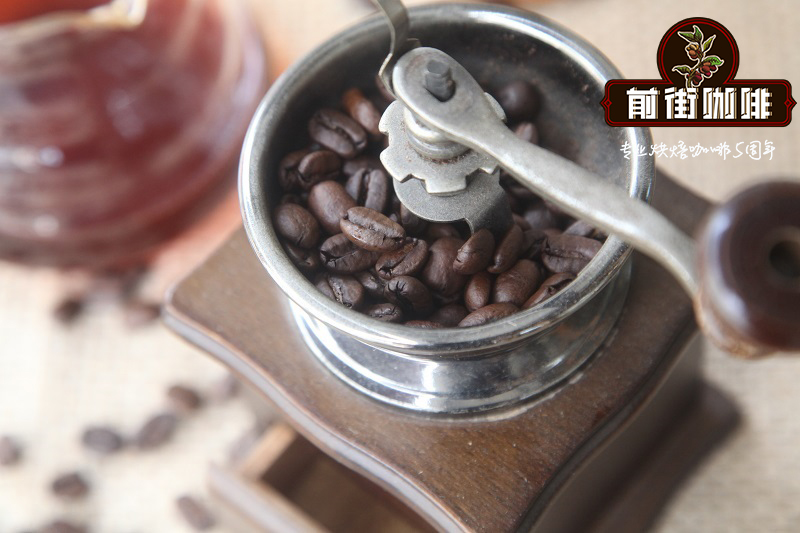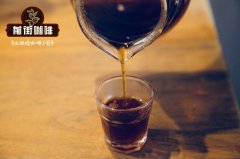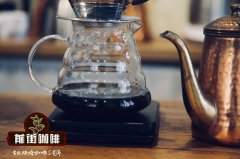Coffee World Map: Grafting History of Coffee Beans in Guatemala
Talking about Coffee: the World Map of Coffee-- Guatemala

"dangerous Land" is a nickname given to Guatemala by coffee lovers. The Mayan town sits on top of 37 volcanoes, two of which erupted in 2010. Coupled with frequent tornadoes and natural disasters everywhere, it is a veritable "dangerous place". However, fertile volcanic soil, undulating mountains and changeable microclimate are ideal conditions for growing coffee. As of 2011, Guatemala was the country with the highest coffee production in Central America.
Very hard beans, mild coffee.
In the past, importers divided coffee into two categories: Brazil and Brazil and Mild. At that time, Brazilian coffee was a negative example: mixed with immature, overripe or defective beans and treated with unstable sun exposure, the coffee produced was difficult to swallow and of poor quality. Guatemala is rich in water, coupled with mechanical technology from Germany, so that the advantages of washing treatment can be brought into full play. Guatemala extremely hard beans (Strictly Hard Bean) is the leader of mild coffee.
The planting environment is ever-changing
Guatemala has been growing coffee since 1850. Before World War I, the Germans controlled as much as 80% of the country's production, most of which was exported to Germany. In the 1990s, the official Coffee Farmers' Association ANACAFE divided the country into eight regions according to region and flavor, and registered trademarks to promote the origin. These include Antigua, Acatenango, Huehuetenango and Atitl á n, where many award-winning farms are located. Common beans in Guatemala today include Typica, Bourbon, Caturra, Catua í, Pacas, Maragogype, Pacamara (a hybrid of the first two), Pache Comum (a local variety of Typica), and Gesha.
The author has tried geisha coffee produced in different countries. One from Guatemala, from the Acatenango district. Because the taste is too unique, the characteristics of the origin are completely overshadowed. If it is said that the performance of a geisha in Panama is an one-man show, Guatemala, which has an ever-changing planting environment, is a big stage for different varieties to blossom. The Emerald Manor won all the trophies with a geisha, and it was followed by Finca El Injerto (Graft Manor) in Huehuetenango, Guatemala.
Grafted manor won many honors
Coffee grafted onto the manor has won awards in COE competitions every year since 2004 and won the presidential grade in 06, 08, 09 and 10 (that is, a total score of more than 90 points). But unlike the Jade Manor, which competes with geisha, it competes with different kinds of beans every year. I still remember that in 2010, it won the title of 93.14 points for the Pacamara species, which was rated as "low acid and light taste" at that time, and brought up the planting fever throughout Central America! It can be seen that soil, climate and treatment are as important as bean genes. Since 2011, Graft, like the Emerald Manor, has held its own auction, in which a rare ancient species, Mocha, was sold for a record price of US $550 (about HK $4290) per pound in 2012, making the headline of the New York Times.
Important Notice :
前街咖啡 FrontStreet Coffee has moved to new addredd:
FrontStreet Coffee Address: 315,Donghua East Road,GuangZhou
Tel:020 38364473
- Prev

How to drink coffee powder? 6 reasons you will love the music.
How to drink coffee powder? 6 reasons why you will fall in love with Philo Press 1. The threshold for entry is low, unlike French press pots, it is best to use a serrated grinder to avoid uneven thickness affecting the taste; unlike hand brewed coffee, you do not need any special skills, just pour water and press! 2. The price is approachable, the whole set of Philharmonic pressure plus one year filter paper, about NT $
- Next

Treatment of dry fermented honey by small farmers in Torres, Colombia
Colombian Torres small farmer batch dry fermented honey from Colombian coffee farmer Ricardo? Ricardo Torres's honey-treated coffee beans are part of his community crop program at Palm Tree and Big Bird Manor. After picking and screening the coffee cherries, rest for several hours to pre-ferment, then remove the peel, and then place in
Related
- Detailed explanation of Jadeite planting Land in Panamanian Jadeite Manor introduction to the grading system of Jadeite competitive bidding, Red bid, Green bid and Rose Summer
- Story of Coffee planting in Brenka region of Costa Rica Stonehenge Manor anaerobic heavy honey treatment of flavor mouth
- What's on the barrel of Blue Mountain Coffee beans?
- Can American coffee also pull flowers? How to use hot American style to pull out a good-looking pattern?
- Can you make a cold extract with coffee beans? What is the right proportion for cold-extracted coffee formula?
- Indonesian PWN Gold Mandrine Coffee Origin Features Flavor How to Chong? Mandolin coffee is American.
- A brief introduction to the flavor characteristics of Brazilian yellow bourbon coffee beans
- What is the effect of different water quality on the flavor of cold-extracted coffee? What kind of water is best for brewing coffee?
- Why do you think of Rose Summer whenever you mention Panamanian coffee?
- Introduction to the characteristics of authentic blue mountain coffee bean producing areas? What is the CIB Coffee Authority in Jamaica?

